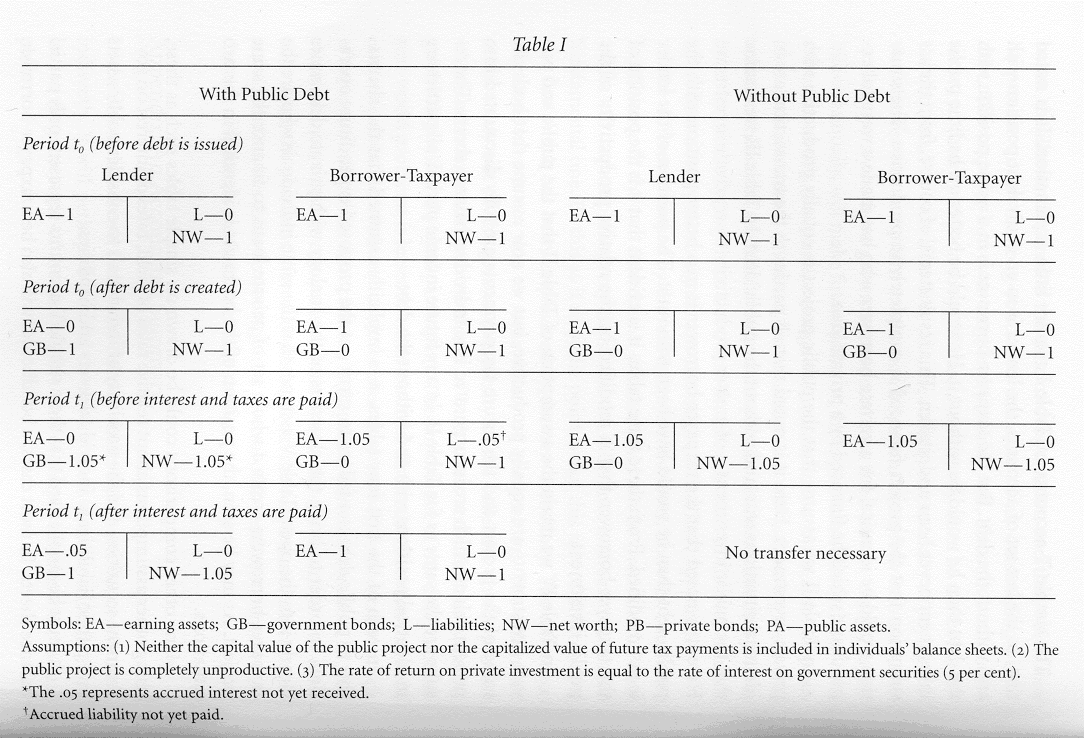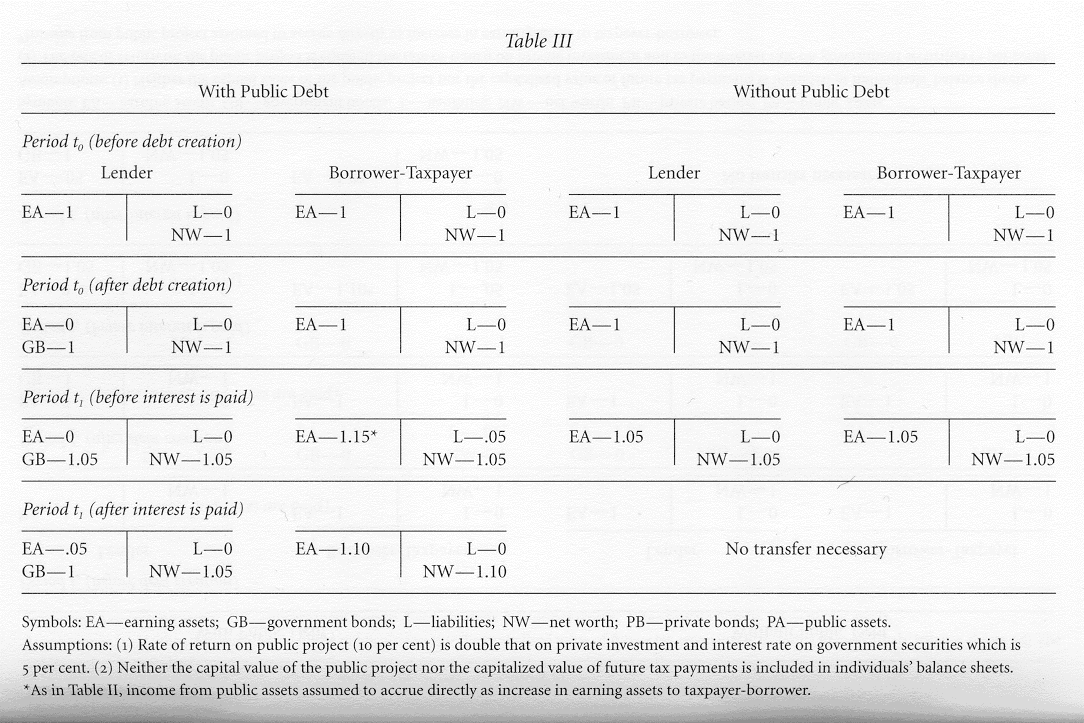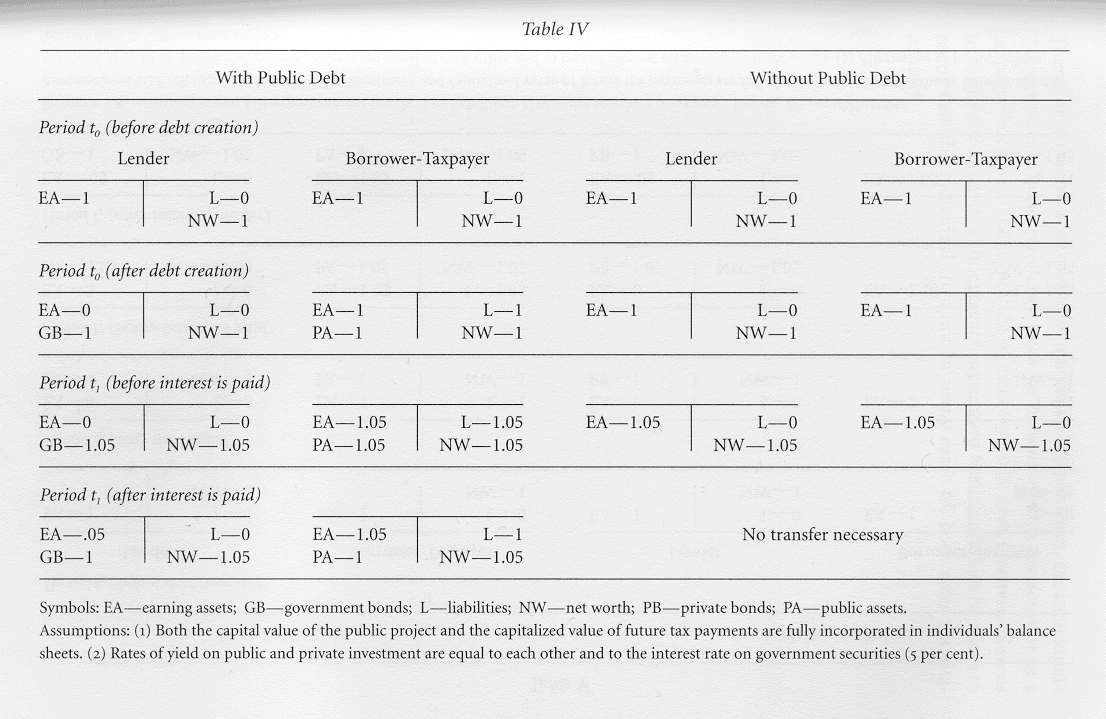Public Principles of Public Debt: A Defense and Restatement
By James M. Buchanan
Publisher
none
- Foreword
- Ch. 1, The Economists and Vulgar Opinion
- Ch. 2, The New Orthodoxy
- Ch. 3, The Methodology of Debt Theory
- Ch. 4, Concerning Future Generations
- Ch. 5, The Analogy: True or False
- Ch. 6, Internal and External Public Loans
- Ch. 7, Consumption Spending, the Rate of Interest, Relative and Absolute Prices
- Ch. 8, A Review of Pre-Keynesian Debt Theory
- Ch. 9, Public Debt and Depression
- Ch. 10, War Borrowing
- Ch. 11, Public Debt and Inflation
- Ch. 12, When Should Government Borrow
- Ch. 13, Should Public Debt Be Retired
- Ch. 14, Debt Retirement and Economic Stabilization
- Appendix, A Suggested Conceptual Revaluation of the National Debt
Appendix: An Accounting Summary
In the discussion above, individual balance sheets have been frequently used indirectly. It will perhaps be useful to employ them more specifically here and to diagram some of the analysis in terms of simple balance sheet examples.
The simple T-accounts of Table I require little explanation. It is noted that, in the last set of accounts, the lender is in an equivalent position with and without the debt. But the taxpayer-borrower is in a worse position with the debt than he would be without it. He would be better off had the public investment never been undertaken. This result stems, of course, from the assumption that the project financed is completely unproductive. The situation would be identical for a private borrower who has made a wasteful expenditure which he financed by a private loan.

In Table II we assume that the public project is equally productive with private investment. Here it is noted that all parties to the transaction are in identical situations with and without the public debt. In Table III we assume that the public investment is of greater productivity than private investment. Here it is noted that the taxpayer-borrower is in a better position with the public debt than he would have been without it. The position of the lender is not modified. From these three tables it is evident that it is the position of the taxpayer-borrower that is modified by the relative productivity of the public investment.


In Table IV we retain the assumption of Table II that the public and private investments are equally productive, but we now assume that both the value of the project and the future tax payments are fully discounted into present values which are incorporated into individual balance sheets. The results are the same as for Table II. In any future income period, all parties are in identical positions with and without the debt.

In each of the first four tables, it is implicitly assumed that the alternative to public debt is a failure to carry out the proposed expenditure operation. In order to bring the closeness of the analogy with private debt more clearly into the open, Table V assumes that the same individuals who are the taxpayer-borrowers create a whole set of private loans to finance the same project. As may be seen, the position of the borrower is identical in the two situations.

Many other comparisons could be drawn on simple tables such as these, using other assumptions about relative rates of yield, rates of interest on government securities, and the proclivity of individuals to consider public assets and public liabilities as individual assets and liabilities.
It must be emphasized that these simple T-accounts represent only partial balance sheets. In most cases, a bondholder will also be a taxpayer-borrower. Therefore, to arrive at a composite individual balance sheet, the individual’s T-account as a bond purchaser must be combined with his account as a taxpayer-borrower. The separation of these two roles does, however, allow us to clarify the analysis, although such separation here should not be taken to mean that the individual may not in many cases fill both roles simultaneously.

